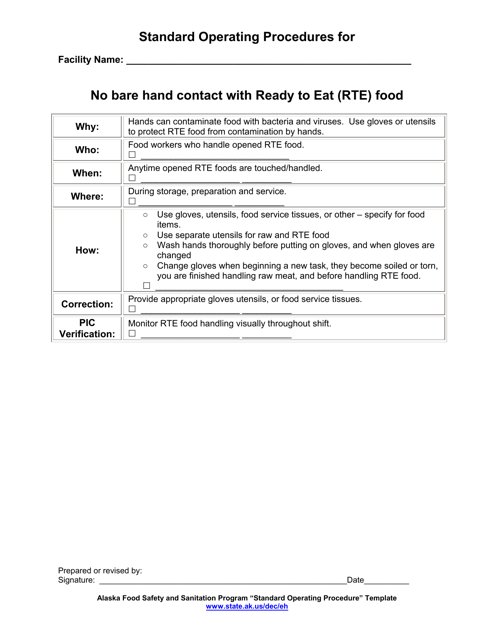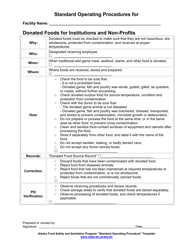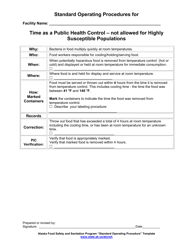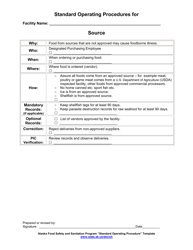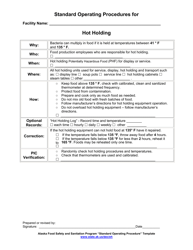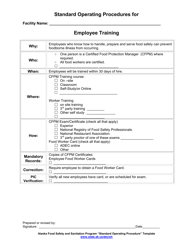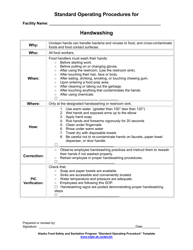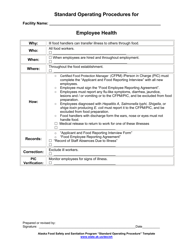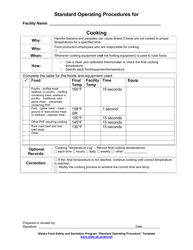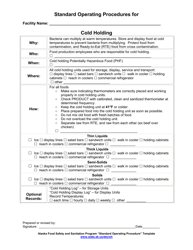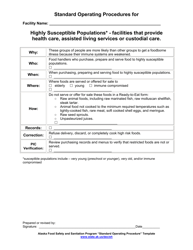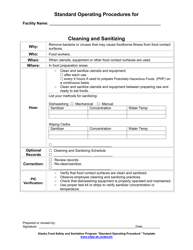Standard Operating Procedures for No Bare Hand Contact With Ready to Eat (Rte) Food - Alaska
Standard Operating Procedures for No Bare Hand Contact With Ready to Eat (Rte) Food is a legal document that was released by the Alaska Department of Environmental Conservation - a government authority operating within Alaska.
FAQ
Q: What are the Standard Operating Procedures for No Bare Hand Contact with Ready to Eat (RTE) food in Alaska?
A: The SOPs for No Bare Hand Contact with RTE food in Alaska require food handlers to wear single-use gloves or use utensils to prevent direct contact with food.
Q: Why is No Bare Hand Contact important?
A: No Bare Hand Contact is important to prevent the spread of bacteria and contamination from hands to ready-to-eat food, reducing the risk of foodborne illness.
Q: What are some examples of RTE foods?
A: Examples of RTE foods include salads, sandwiches, sushi, fresh fruits and vegetables, and pre-cooked or pre-packaged foods that will not undergo further cooking before consumption.
Q: What should food handlers do if they need to touch RTE food?
A: Food handlers should wear single-use gloves or use utensils like tongs, scoops, or deli paper when handling RTE food.
Q: Are there any exceptions to the No Bare Hand Contact rule?
A: Yes, there are exceptions for certain situations where food safety is not compromised, such as when washing fruits and vegetables or when handling RTE food for immediate service.
Form Details:
- The latest edition currently provided by the Alaska Department of Environmental Conservation;
- Ready to use and print;
- Easy to customize;
- Compatible with most PDF-viewing applications;
- Fill out the form in our online filing application.
Download a printable version of the form by clicking the link below or browse more documents and templates provided by the Alaska Department of Environmental Conservation.
